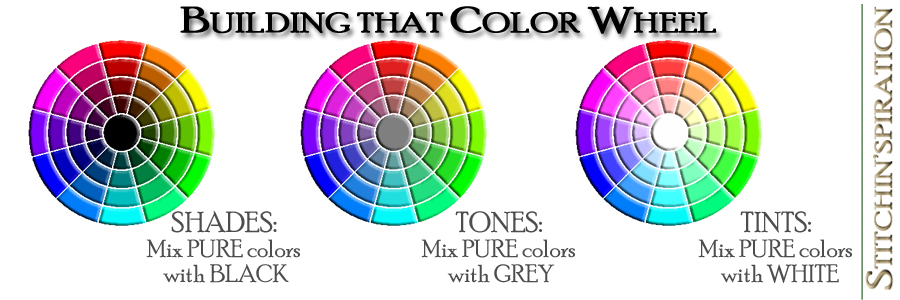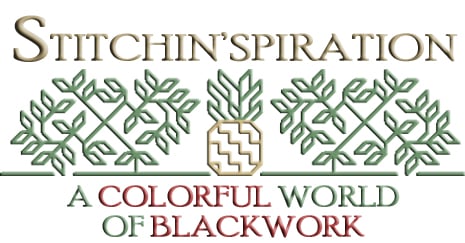
05 Mar Building that Color Wheel
We have talked about color wheels, but now we need to deconstruct them down a little bit and see how they are built. In pulling the color wheels apart, you will begin to see how you can apply the same steps to begin to explore color and thread more on your own.
First, let’s look at the basic building blocks of the color wheel:
PRIMARY Colors: These are the true building blocks of your color wheel. These three colors are the ones from which all other colors are determined. In the RYB color wheel, which we’ll use as our example in this post, the three primary colors are RED, YELLOW, and BLUE and they are the basic colors, which cannot be mixed from any other two colors.
SECONDARY Colors: These are the colors which are made when the primary colors are mixed together. RED + YELLOW = ORANGE, YELLOW + BLUE = GREEN, and BLUE + RED = VIOLET.
TERTIARY Colors: These are the 6 colors which are made when the primary and secondary colors are mixed together. You can see on the color wheels shown in the slide show, in each instance a Primary and a Secondary color is mixed. In the RYB color wheel, we refer to these colors as a combination of the colors which make them. RED + ORANGE = RED-ORANGE, BLUE + GREEN = BLUE-GREEN, and so on.

There you have it – you now have a 12-color color wheel with which you can play. But, you know that all colors aren’t always pure color, so let’s look at some of those.
PURE COLORS: The pure colors are the colors reflected on the general color wheel. These colors are the most saturated of the colors, and are the primary colors, and all the other colors which can be mixed by using only the primary colors.
TINTS: Tinting a color means that you mix that color with WHITE, making it lighter.
SHADES: Shading a color means that you mix that color with BLACK, making it darker.
TONES: Toning a color means that you mix that color with GREY, or the mix of white and black.

Now, I’ve been alluding to you that something exciting was going to come from this lowly series on color on a needlework designer’s website. Well, here you go. Now that you know how a color wheel is built, then you can begin to apply the exact same steps to build your own THREAD wheel, or thread palette. As the images in the slideshow reflect, it’s simply following the same steps – choosing the PRIMARY threads, then “mixing” those to come up with your SECONDARY threads, and finally “mixing” the final TERTIARY threads.

And yes, I know that we can’t necessarily “mix” the threads, but you can let your eyes do the “mixing” for you. Find a thread color which seems to be halfway in between the two threads you’re trying to “mix”. We’ll talk more about building the thread wheel later, but I wanted to get your mind rolling on that. This, my friends, is where your inspiration and creativity will come into play!
Over the next couple of weeks, we’ll begin to talk more about building your own thread palettes, and how that can help you in your stitching projects. You’ll begin to find thread palette details both here and on our Facebook page, with thread names and numbers, of examples that I’ve pulled together myself.
Are you ready to take charge over your own thread palettes?


No Comments